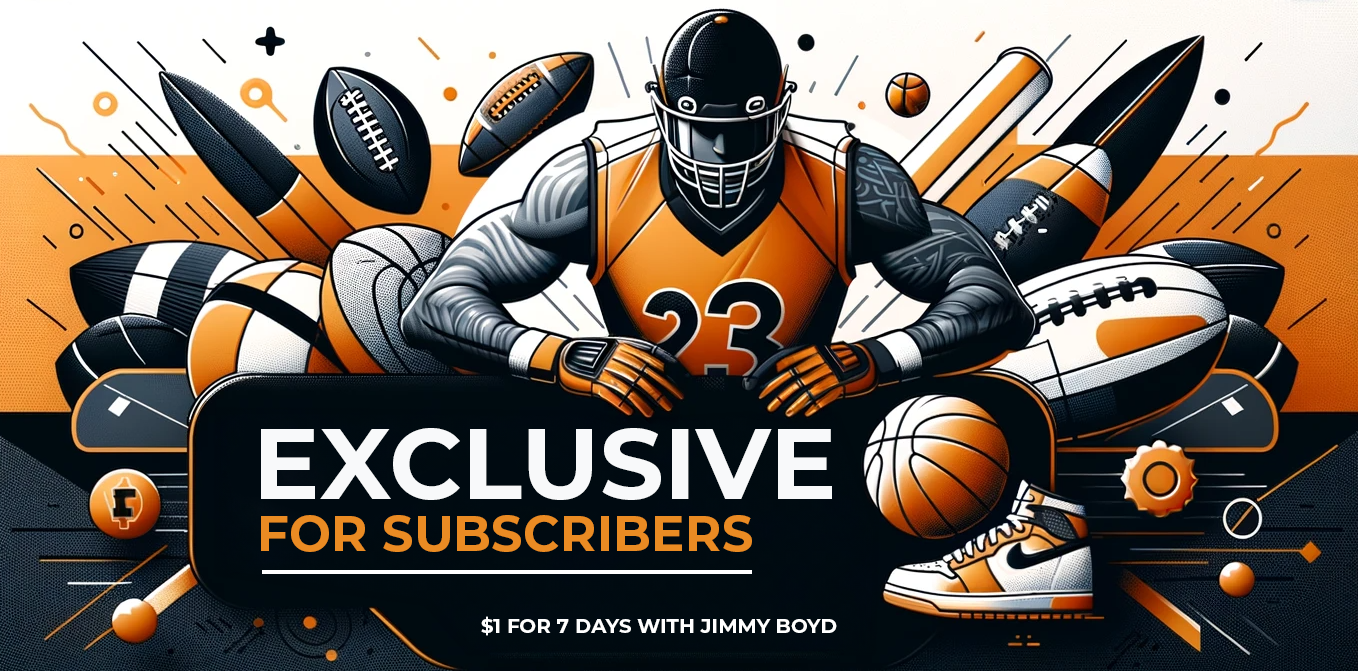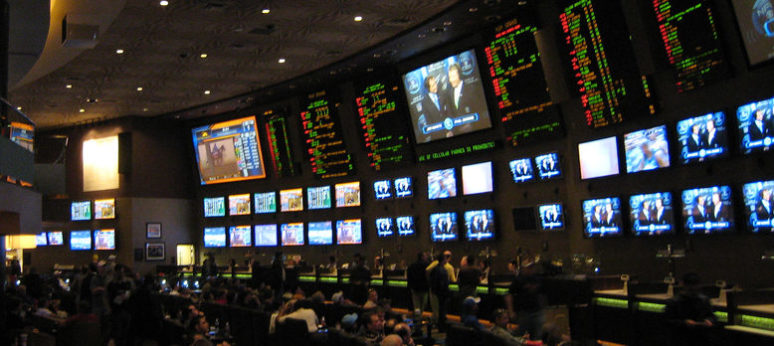Many novice bettors are told to stick only to straight bets. That’s because they don’t do the work or research to make wise investments with teasers and parlays. You too may have been told that parlay wagers are considered sucker bets. That’s not accurate at all. One time where they are a profitable proposition is with correlated parlays.
Now, that doesn’t mean you should just throw any two or more teams that you like together into a teaser or a parlay. You have to use a different strategy. This article is going to cover some solid parlay situations where you can KILL a book that allows you to make certain combinations (Check out our teaser guide to see what we mean for each of the different sports).
Correlated Parlays: What They Are Explained & How to Find Them
There’s a lot that goes into making a strong parlay bet. First things first, you need to make sure you understand how parlays work. That’s just the start, there’s more advanced stuff like when is the right time to hedge your bets.
I’m not going to get into all of that today. Instead, I’m going to introduce to you what a correlated parlay is. I’ll explain exactly what it is and how to find them.
Definition of Correlated Parlays
I’m going to keep it simple. A correlated parlay is a wager in which you have two bets that are tied together. If one of the wagers wins, your chances of winning the second bet increase. Most sports books are not going to accept these types of wagers because if they did, they wouldn’t stay in business very long.
Are Correlated Parlays Profitable?
So what would it take for a correlated parlay to be profitable? If you are hooking up two teams the payout is typically 2.5-to-1. That means that you have to win 28.6% of your two teamers to turn a profit. That is figured by the return of 3.5 divided by your risk which is 1.
Now a few books will give you a 2.64-to-1 payout. In that case, you only have to win 27.5% of your two-team parlays in order to turn a profit.
Let’s assume one side of your parlays hits 50% of the time. How probable does the second event need to be in order for the parlay to be to your advantage? For the typical two-team parlay payout it needs to be 57.2% (.572 * .5 = 2.86). If your payout is 2.64-to-1 then it’s 55% (.55 * .5 = .275).
Now let’s look at situations where if one leg of the parlay wins, the other wins at more than a 57.2% clip. There are several different types of these wagers. I’m going to cover two of the most basic ones in this article.
Why You Can’t Parlay First Half with Full Game Odds
First, we are going to look at the correlation between the first-half spread and the spread for the game. Next, we will look at the correlation of betting the spread and the total on the same game.
If a team covers the first-half spread of a game, how often do they also cover the point spread for the entire game? If you know the team that covers the first half line is more likely to cover for the game, you can parlay those wagers and make a killing, right?
That is exactly the question I wanted to answer, and I was pretty impressed by the results.
First things first, I want everyone to understand that I am aware that no online or Vegas sportsbooks (that I know of) allow correlated parlays. This article is more about why correlated first-half parlays aren’t allowed, however, if you have a local book that happens to allow them, you can most definitely use this information to your advantage, that is, until your book cuts you off!
Why it is Profitable to Bet These?
What exactly is a correlated first-half/full-game parlay? You are looking to bet the first half and the full game on the same team. Either the favorite or the underdog. You can do both, but that will appear pretty obvious and likely to get you cut off sooner.
I’ve provided the hard numbers for the NFL and NBA below, but let’s just talk about the method behind the madness first. We are going to use typical two-team parlay odds, which pay 2.5-to-1 (or bet $100 to win $250). We will also use $100 as the base bet amount to make things as easy to understand as possible.
Let’s say the Patriots are favored in a game against the Lions by 7 points. In the first half, they are likely to be 3.5-4-point favorites. Our bets for this game would be:
- $100 Parlay to win $250 on the Patriots -3.5 (1st Half)/Patriots -7 (Game)
- $100 Parlay to win $250 on the Lions +3.5 (1st Half)/Lions +7 (Game)
Now obviously one of these wagers is going to lose, but that’s okay! Our goal here is just to win however many parlays we need to in order to turn a profit. Let’s say you decide you are going to bet correlated parlays on five games on a Sunday, How many parlays would you need to hit in order to turn a profit?
The worst you can perform and still turn a profit is to go 3-7 (30%) on the night. Here’s the math:
- 7 Losses x $100 = $700
- 3 Wins x $250 = $750
- Total Profit = $50
Now, based on an uncorrelated two-team parlay, you are only expected to win 25% of your bets (50% chance to win each = 25% chance to win both). This makes sense – otherwise, everyone would just win truckloads of money by betting parlays.
The secret here is to increase our chances of winning the second piece of the parlay. That’s where the correlation between the first-half line and the game line comes in. When teams cover the first-half line, they have better than a 50% chance of covering the line for the game, right? Logic would tell us that they would, however, hard data is even better.
Historical Data from the NFL and NBA
NFL
- Favorite Covers Both 1st Half and Game Line: 73.3%
- Underdog Covers Both 1st Half and Game Line: 76.7%
NBA
- Favorite Covers Both 1st Half and Game Line: 70.1%
- Underdog Covers Both 1st Half and Game Line: 69.8%
In all of these situations, if the team covers the first half line, they are much more likely to cover the game line. For example, using NFL favorites, you are given the standard 50% chance to win the first half, but then a 73.3% chance to win the game, meaning you have about a 36.6% chance of winning your parlay.
Since you only need to hit 30% of your parlays (28.6%, to be exact) to turn a profit, these bets are a no-brainer! In fact, if you can increase your chance of winning the second bet in your parlay by 7% (so up to 57%), you should make a profit over time.
Let’s look at the expected return. Let’s just say you hit 75% in the NFL and 70% in the NBA to keep it simple. So .5 *.75 = .375 means 37.5% of the time you win $250. You lose $100 62.5% of the time. Your expected profit would be 93.75 (.375 * 250) – 62.50 (.625 * 100) for $31.25 for every $100 bet. Now if the number is 70% in the NBA you get .5 * .7 = .35. 35% of the time you’d win $250 and 65% of the time you’d lose $100. (.35 * 250) – (.65 * 100) = 87.50 – 65.00 for $22.50 of profit for every $100 bet.
You can now see why sportsbooks won’t allow you to bet parlays on the first half and game of most major sporting events. If bettors were allowed to wager on these, they would soon be out of business, as you are nearly guaranteed to make a profit over time with this method.
Of course, there may be some local books out there that aren’t aware of this, so don’t be afraid to ask around and see if there’s a sucker out there willing to take these bets!
Why Are Same Game Parlays Not Allowed? They Are Correlated
I took a look at the four major spread sports and ran the numbers. I was trying to find any situations where a favorite or underdog covered and the total hit more than 57.2% of the time. Here is what I found.
College Football
I went back to the last 3,732 games a favorite covered the spread. What I found was the over had a record of 1,959-1,773 (52.5%). In the 3,361 games when the team was a field goal or more favorite the over was 1,793-1,568 (53.3%). If the team was laying a touchdown or more the over was 1,328-1,082 (55.1%).
The over percentages started picking up when we looked at double-digit favorites. The over then hit 57.4% of the time on a record of 1,090-808. When a favorite of two touchdowns or more covers the over went 838-582 (59%). A 20+ point favorite covering leads to a 547-321 record for the over (63%).
When a team’s 28+ point favorite covers the over has hit 261-122 (68.1%) of the time. When you stretch the line out to 30-point favorites or higher the number jumps up to 216-92 (70.1%).
If a team a 35 points or more chalk and cover the over went 127-51 (71.3%). There have only been 95 favorites of 40+ points in recent years with a lined total. In those games, if the favorite covers the over was 65-29 (69.1%).
If instead of looking at the hard numbers you go with percentages then the magic number seems to be about 40%. The spread has to be 40% of the total for you to take the favorite and the over or the underdog and the under.
Overall this system has seen the over go 495-274 (64.4%) when the favorite covers. Keep that in mind when taking a look at the college football odds every week.
NFL
So let’s take a look at the same parameters in the NFL. Here you won’t find nearly the same correlation. Looking at all favorites the over has gone just 1,576-1,532 (50.7%).
Let’s see if the over hits at a higher rate as we increase the number. A field goal or more favorite covering means a record of just 1,289-1,245 for the OVER (50.9%). Move up to a touchdown or more you will find the over was 527-487 (52%). However, stretch it out to double digits, and when the favorite covers the over only went 203-194 (51.1%).
Favorites of more than two touchdowns that covered also went over the total 56.2% of the time at 50-39.
There is no magic number with percentages here either. That makes sense. There aren’t going to be as large of favorites in the pros v. college. There are only 16 games that have seen a spread at 40% or more of the total.
The bottom line is you can’t rely on any sort of correlation to beat the pro lines each Sunday.
In basketball, you’ll find the trend reverses. This makes sense. What happens when a big favorite is up at the end of the game? Both teams kill the clock and try to get out of there. Here is the data that I found.
NBA
Favorites of 5.5 or more that cover goes UNDER 51.1% of the time at 3,368-3,224. If you stretch the number up to double-digit favorites who hit, the UNDER lands 52.5% of the time at 1,006-912. If you go up to favorites of 15 points or more that cover the under has hit 56.2% of the time at 122-95.
College Basketball
There doesn’t seem to be as much correlation with NCAA basketball. When a team covers as a favorite of six or more the under went 4,309-3,954 (52.1%). Favorites of eight or more that covered went under 3,264-2,865 (53.3%) of the time.
However, once you went up to double digits the numbers started dropping. Double-digit favorites went under 52.8% of the time (2,318-2,072). 13+ point chalk that covered only went under 1,371-1,231 (52.7%) of the time.
Conclusion
The problem with the correlated parlays is finding a place that will take your action. The reputable sportsbooks that we use know about these statistics and won’t let you play them. You will need to find a square book to take the action. Or, just pair up the smaller spreads that you really like with the corresponding total.
However, if you can find an old-school bookmaker without a clue, you might want to do round robin betting with these teams to get even more action in play and increase your profits!



